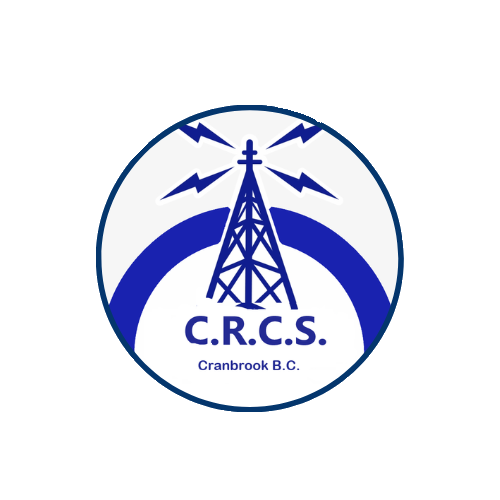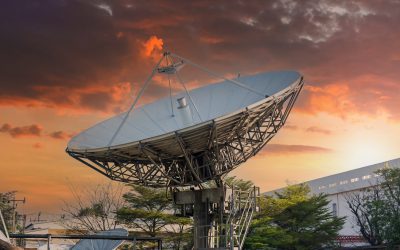As November rolls in, radio operators begin to notice significant shifts in radio wave propagation. These changes, driven by seasonal atmospheric conditions, can dramatically alter both high-frequency (HF) and very-high-frequency (VHF) bands. Understanding how November’s unique propagation characteristics affect communication—and learning how to adapt—can make a big difference for ham radio enthusiasts. In this post, we’ll explore what to expect from these seasonal propagation changes, the science behind them, and strategies for optimizing your communication during this time.
1. Why Does November Affect Propagation?
The Earth’s atmosphere is divided into layers, each playing a different role in radio wave propagation. In particular, the ionosphere—ranging from approximately 60 to 1,000 kilometers above the Earth’s surface—contains charged particles that can reflect or refract radio waves, depending on conditions. As we move into late autumn, the atmosphere undergoes changes due to shifting solar angles and cooler temperatures. These changes in November can affect ionization levels, especially in the F-layer, which is crucial for HF propagation.
In addition, reduced solar radiation during this period means less ionization of the atmosphere, which can impact how radio waves travel. The seasonal transition can also increase occurrences of phenomena such as tropospheric ducting and sporadic-E layers, which can alter signal strength and quality on both HF and VHF bands.
2. HF Propagation in November: Challenges and Opportunities
HF (high-frequency) bands, which range from 3 to 30 MHz, are widely used for long-distance communication. In November, HF propagation can be affected in various ways:
Decreased Daytime Ionospheric Propagation
One of the key effects of late autumn is the reduced daytime ionization of the F2 layer. With less solar activity, there is less ionization available to sustain long-range HF propagation during the day. As a result, HF frequencies that might work well during summer days may experience weaker performance or limited range in November.
However, with reduced solar radiation, nighttime ionospheric conditions can improve, particularly for lower HF bands like 160, 80, and 40 meters. These bands often experience less atmospheric noise at night, leading to clearer reception and greater propagation distance. This phenomenon, called the “low-band advantage,” is particularly prominent as we approach winter.
Improved Long-Distance Communication During Nighttime
In November, many HF operators notice an improvement in long-distance (DX) communication during nighttime hours. The lower bands can “open up,” allowing signals to travel much farther than during daylight. This effect is due to the increased density and stability of the nighttime F-layer, which better reflects lower frequencies back to Earth. As a result, November is a prime month for operators seeking to make long-distance contacts, especially during the evenings.
3. VHF Propagation in November: Tropospheric Ducting and More
VHF (very-high-frequency) bands, ranging from 30 to 300 MHz, behave differently than HF bands, as they are typically used for shorter-distance communication. However, certain atmospheric conditions in November can enhance VHF propagation through mechanisms such as tropospheric ducting and sporadic-E.
Tropospheric Ducting
During autumn, cooling temperatures and variations in air pressure can create layers of warm air trapped between cooler air layers, especially near the ground. This phenomenon, known as a temperature inversion, can enhance VHF propagation by trapping signals between layers, allowing them to travel farther than normal. Tropospheric ducting can allow VHF operators to reach stations hundreds of miles away, which is rare under typical conditions.
November’s cooler temperatures and high-pressure systems make tropospheric ducting more common, particularly in the early morning or late evening. Keep an eye on local weather reports, as ducting often coincides with clear skies and stable atmospheric conditions.
Sporadic-E Propagation
While sporadic-E propagation is more common in the summer months, it can still occur during late autumn. Sporadic-E refers to unpredictable, short-lived bursts of ionization in the E-layer, typically around 100 kilometers above Earth. This ionization can reflect VHF signals back to Earth, allowing for unexpectedly long VHF contacts.
In November, sporadic-E events are usually less intense than in summer, but they do occur, especially in the later part of the month. Operators should monitor VHF bands for potential openings, as these events can support long-distance communication beyond the typical VHF range.
4. How to Adapt to November Propagation Changes
Adjusting your approach to ham radio operations during November can help you make the most of these unique propagation conditions. Here are some tips for adapting:
Focus on Low HF Bands for Nighttime DX
Since November offers enhanced nighttime propagation for lower HF bands (like 160, 80, and 40 meters), operators aiming for long-distance DX contacts should focus their efforts during evening hours. These bands often provide clearer signals at night, making it easier to establish connections over greater distances.
If you’re new to working with lower HF bands, be prepared for longer antennas and slightly different equipment requirements than for higher HF bands. However, the payoff in terms of range and clarity is often worth the adjustment.
Use Propagation Tools and Resources
Several online tools can help operators track real-time propagation conditions. Websites like VOACAP and DX Heat offer propagation predictions based on factors such as solar activity, time of day, and geographic location. These tools can be invaluable in planning your activities, especially during months when propagation conditions are variable.
Some websites even provide visual maps showing real-time DX spots, so you can quickly assess which bands are open and where strong signals are currently being reported. Use these tools to guide your frequency selection and timing.
Monitor VHF Bands for Ducting Conditions
Keep an eye on local weather forecasts to identify potential tropospheric ducting conditions. High-pressure systems and temperature inversions can signal a possible opening on VHF bands. Operators with access to 2-meter or 70-centimeter equipment can often take advantage of these conditions to make contacts over unusually long distances.
Many weather apps and websites indicate temperature inversion events, which can serve as a heads-up for potential ducting opportunities. Consider setting up alerts for these conditions so you don’t miss valuable VHF openings.
Experiment with Different Antenna Setups
Antenna adjustments can improve your ability to handle propagation changes. For HF bands, adjusting the height and orientation of your antenna may help optimize for the lower angles of nighttime propagation. Vertical antennas, for example, often perform well for long-distance contacts on lower HF bands.
For VHF operators, experimenting with directional antennas (like Yagis) can help focus your signal during tropospheric ducting events. In November, flexible antenna arrangements can make a big difference in adapting to changing propagation conditions.
Practice Patience and Flexibility
Propagation during November can be unpredictable, so patience is key. Conditions may vary from day to day, with bands opening and closing unexpectedly. Try to remain flexible with your operating schedule, and consider experimenting with different frequencies and times of day to find openings. Adapting your routine in response to real-time propagation conditions can improve your success.
5. The Science Behind November Propagation Changes
Understanding why propagation changes occur in November can help operators make informed adjustments. During autumn, the sun’s angle in the sky decreases, reducing the amount of solar radiation reaching the ionosphere. This reduction in solar activity means less ionization, which impacts the ionosphere’s ability to support long-distance HF propagation, especially during the day.
Simultaneously, cooler temperatures near the ground cause atmospheric stratification, leading to temperature inversions and the potential for tropospheric ducting. These changes explain the mixed propagation conditions—better low-band HF performance at night, occasional VHF ducting, and reduced daytime HF range—that ham radio operators observe in November.
Embrace November’s Unique Propagation Conditions
November’s propagation changes may present challenges, but they also offer exciting opportunities for ham radio operators who are prepared to adapt. By focusing on nighttime HF propagation, monitoring VHF bands for ducting, and using available tools to track conditions, operators can make the most of this dynamic period.
Remember, flexibility and patience go a long way. With the right strategies, you can embrace November’s unique propagation conditions and continue making connections, even as the atmosphere shifts. Stay informed, stay adaptable, and enjoy the changing propagation landscape this November.




